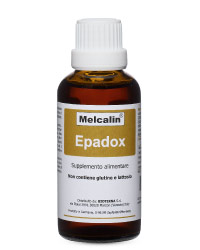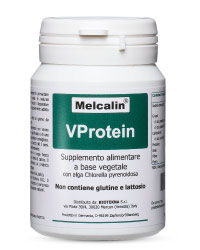Introduction
The kidneys perform different functions in our body: remove metabolic waste products (such as the nitrogenous), various medications (such as antibiotics) and other substances that we introduce, regulate the volume of body fluids and minerals, produce certain hormones like erythropoietin (which stimulates the formation of red blood cells by the bone marrow), renin and prostaglandins (that regulate blood pressure) and produce the active form of vitamin D, essential for the intestinal absorption of calcium and bone calcification .
There are several herbs used by tradition to promote diuresis and maintain good kidney function, these include solidago virgaurea, sabal serrulatum and populus tremuloides all plants whose effectiveness has been confirmed in clinical studies.
Elimination of xenobiotics
Hepatic metabolism and renal excretion are the main routes of elimination of many exogenous substances including medications; although the liver plays a dominant role in their metabolism also the kidney is a seat of biotransformation of these substances: a product is generated in the kidney that is more easily eliminated in the urine, however, in certain cases the metabolite, which can also be more active and more toxic than the parent compound, it can be reabsorbed back into the blood stream and play back its activities2.
The water-soluble drugs and their metabolites are eliminated by the kidneys through urine, therefore, several factors affect the mechanism of urinary elimination of the drug as some characteristics of the drug (a drug or its metabolite must be soluble in water and must not be tied too closely to the plasma proteins), the flow of urine, blood flow in the kidney and the state of health of the kidneys. It should be remembered that the renal function may be compromised by many disorders (high blood pressure, diabetes and recurring kidney infections), by exposure to high levels of toxic substances and by age (kidney function slowly declines with age), therefore, in patients with decreased renal function the dosage of a drug that has this elimination pathway should be carefully studied; you can make an estimate of the kidney functionality using tests that measure the level of creatinine (Cr-24h: creatinine within 24 hours-Bia ACC)1 in the blood3.
Volume regulation of body fluids and minerals
Water is essential for life, we all assume it regularly even through food; kidneys regulate and help maintain the right balance of water and electrolytes, the blood enters the glomerulus and most of the fluid fraction of the blood is filtered through the small pores in the glomerulus, leaving behind blood cells and larger molecules such as proteins. Almost all of this fluid (and electrolytes in it) is reabsorbed by the kidney, only about 1.5-2% is excreted as urine. It is estimated that in healthy adults about 180 liters of liquid every day is filtered by the kidneys. For this resorption to happen, the different parts of the nephron eliminates and reabsorb different electrolytes; water reabsorption in kidney is regulated by vasopressin or antidiuretic hormone (produced by the pituitary gland): when the amount of this hormone is low you will have a greater diuresis while when this hormone is present in greater quantities diuresis will decrease4.
Hormonal Production
Kidneys produce important substances such as erythropoietin, renin and prostaglandins.
Erythropoietin (EPO) is a hormone produced mainly by fibroblasts of the renal cortex; it is able to promote the proliferation, differentiation and survival of red cell progenitors; its overproduction causes erythrocytosis while a deficiency is the leading cause of anemia in cases of chronic kidney disease5.
Renin is a central hormone in the blood pressure control; its main source of production is represented by the juxtaglomerular cells of the kidney. It seems to be of great importance for the maintenance of blood pressure, for the homeostasis of body fluid volume and sodium: as a result of significant changes in the assumption of sodium, in the individuals examined were detected constant pressure values demonstrating the importance of the activity of the renin-angiotensin system in blood pressure control6.
. Prostaglandins are also substances capable of regulating blood pressure; Studies show that the renal synthesis of prostaglandins increases in hypertensive subjects, and this occurs in response to the progressive development of hypertension7,8furthermore it has been noticed that an insufficient production of prostaglandins in the kidney is commonly found in patients with essential hypertension9. According to other researches prostaglandins are involved in the mechanisms that regulate blood pressure when for a variety of causes renal blood flow is drastically reduced 10.
The kidneys are then able to adjust both the amount of red blood cells through the production of erythropoietin and pressure values through the control of the plasma volume (through the elimination or the reabsorption of water, sodium), producing renin and prostaglandins11.
Production of the active form of vitamin D
Throughout the course of life, vitamin D plays a vital role in calcium homeostasis and in the metabolism of the skeletal. It is very important for the functionality of various systems such as the immune, cardiovascular and Reproductive system and, therefore, an inadequate intake of vitamin D can have serious health consequences: epidemiological results link the vitamin D deficiency to disorders such as osteoporosis, osteoarthritis, diabetes mellitus, multiple sclerosis, periodontal disease and some forms of cancer.
The sources of vitamin D are represented by food and cutaneous synthesis after exposure to sunlight. After skin synthesis, vitamin D (cholecalciferol) enters the bloodstream and is transported to the liver bound to vitamin D binding protein (DBP) while vitamin D taken with diet is transported to the liver in chylomicrons. In both cases, at the time when it reaches the liver it is converted to 25-hydroxycholecalciferol which is transformed into a most active compound namely 1,25-dihydroxycholecalciferol in the kidney tubules. The 1,25-dihydroxycholecalciferol is able to increase the absorption of calcium in the intestine, facilitate the absorption of calcium in the kidney and also act on the bone increasing the number of mature osteoclasts and stimulate osteoblasts.
The kidney is therefore of fundamental importance in the transformation of vitamin D in most active compounds that will play an important role in bone mineralization with clinically very important effects12,13,14.
Renal protective activity of certain compounds
For centuries remedies based on solidago virgaurea have been well experimented for the treatment of urinary tract diseases. Pharmacological investigations have shown that preparations of this herb have a rather complex spectrum of action (anti-inflammatory, antibiotic, diuretic, antispasmodic, analgesic) which is particularly indicated for the treatment of infections, inflammations and to prevent the formation of kidney stones furthermore the presence of flavonoids gives this plant a good diuretic action. It should be emphasized that examined therapies are proven as safe and showed no side effects 15,16,17.
Serenoa repens is a plant known for its ability to reduce the symptoms of benign prostatic hypertrophy; it is able to improve urological symptoms and urinary flow compared to placebo therapy but also it has been proven that it provides benefits similar to those produced by finasteride (drug used for various ailments such as the treatment of benign prostatic hypertrophy, prostate cancer and androgenic alopecia) showing less adverse effects than the conventional treatment18,19,20.
Populus tremuloides has a long history in traditional applications: it has been widely used in medicine for many native North American Indian tribes who used it mainly for its antiseptic and analgesic properties using it in the treatment of wounds, skin diseases and respiratory disorders, it also has anti-inflammatory activity and diuretic properties that make it suitable for disorders of the urinary tract21.
Conclusions
The kidneys are important organs through which they are eliminated numerous substances including waste and xenobiotic metabolism, regulate body fluid volume and therefore also regulate arterial pressure and are involved in hormone production.
Melcalin Rendox conteins solidago virgaurea, serenoa repens and populus tremuloides, all plants that help improve and preserve renal function which is essential for all these activities to be conducted. The diuretic effect of these plants is associated with many other properties that have: anti-inflammatory, antispasmodic, analgesic and antiseptic properties.
The administration consists of 30 drops of Melcalin Rendox diluted in a half-liter bottle of water to which it is advisable to add 30 drops of Melcalin Epadox to drink in the morning in order to have an integrated action of protection of the kidney and the liver.







